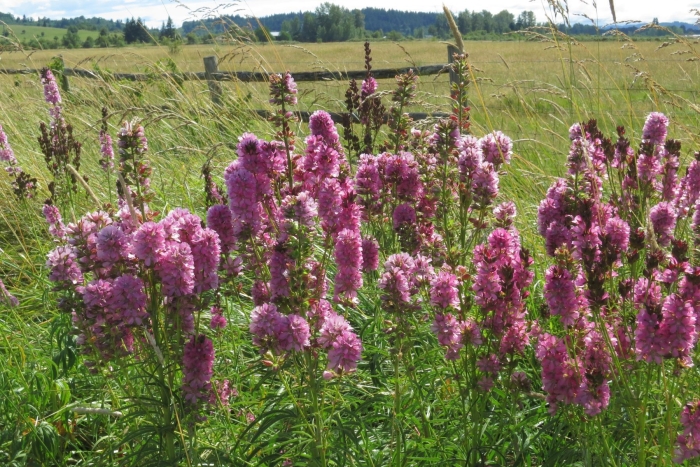Cusick’s Checkerbloom
(Sidalcea cusickii)
Cusick’s Checkerbloom (Sidalcea cusickii)
/
/

Ed Alverson
CC BY 4.0
Image By:
Ed Alverson
Recorded By:
Copyright:
CC BY 4.0
Copyright Notice:
Photo by: Ed Alverson | License Type: CC BY 4.0 | License URL: http://creativecommons.org/licenses/by/4.0/ | Rights Holder: Ed Alverson | Publisher: iNaturalist | Date Created: 2013-06-17T16:08:32-07:00 |













Estimated Native Range
Summary
Sidalcea cusickii, commonly known as Cusick’s checkerbloom, is a perennial herb endemic to the moist mountain meadows and wetlands of the Pacific Northwest, particularly in Oregon. It can reach up to 6 feet in height and is characterized by its thick taproot and rhizomes, which contribute to its resilience and ability to spread. The stems are purple-tinged, and the leaves are toothed and palmate, adding to its distinctive appearance. During the flowering season, which occurs in the summer, Sidalcea cusickii produces dense spikes of showy, cup-shaped flowers that are typically pink to lavender in color, attracting pollinators such as bees and butterflies.
Cusick’s checkerbloom is valued for its tall, stately spikes of flowers that can add vertical interest to native plant gardens, wetland restoration projects, and naturalized areas. It is also used in rain gardens due to its preference for moist conditions. In cultivation, it requires consistent moisture and fertile, well-draining soil to thrive. It prefers full sun to partial shade and can be propagated by division or from seed. While generally low-maintenance, it can be susceptible to rust and other fungal diseases in overly wet or poorly ventilated conditions.CC BY-SA 4.0
Cusick’s checkerbloom is valued for its tall, stately spikes of flowers that can add vertical interest to native plant gardens, wetland restoration projects, and naturalized areas. It is also used in rain gardens due to its preference for moist conditions. In cultivation, it requires consistent moisture and fertile, well-draining soil to thrive. It prefers full sun to partial shade and can be propagated by division or from seed. While generally low-maintenance, it can be susceptible to rust and other fungal diseases in overly wet or poorly ventilated conditions.CC BY-SA 4.0
Plant Description
- Plant Type: Herb
- Height: 1.5-2 feet
- Width: 1.5-2 feet
- Growth Rate: Moderate
- Flower Color: Pink
- Flowering Season: Spring, Summer
- Leaf Retention: Deciduous
Growth Requirements
- Sun: Full Sun, Part Shade
- Water: Medium
- Drainage: Medium
Common Uses
Bee Garden, Bird Garden, Butterfly Garden, Deer Resistant, Low Maintenance, Potted Plant
Natural Habitat
Moist mountain meadows and wetlands of the Pacific Northwest, particularly in Oregon
Other Names
Common Names: Cusick’s Checkermallow, Cusick’s Sidalcea
Scientific Names: , Sidalcea cusickii, Sidalcea cusickii subsp. purpurea, Sidalcea cusickii var. cusickii, Sidalcea oregana var. cusickii,
GBIF Accepted Name: